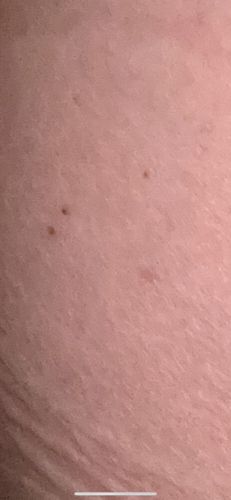Scabies Mite
Scientific Name: Sarcoptes scabiei
Order & Family: Astigmata, Sarcoptidae
Size: Females are 0.3-0.45 mm long; males are 0.2-0.25 mm long. They are microscopic and not visible to the naked eye.

Natural Habitat
Human skin, burrowing into the superficial layer of the epidermis. They prefer areas with folds or creases, such as between fingers, wrists, elbows, armpits, genitals, and around the waist.
Diet & Feeding
They feed on skin cells, fluids, and keratin as they burrow through the epidermis.
Behavior Patterns
Female mites burrow into the stratum corneum (outermost layer of skin) where they lay 2-3 eggs per day for their lifespan of 4-6 weeks. Larvae hatch in 3-4 days, mature into nymphs, and then adults. The entire life cycle from egg to adult takes 10-17 days. Mites are typically more active at night, which can lead to more intense itching.
Risks & Benefits
Potential risks include intense itching, skin rashes, secondary bacterial infections due to scratching, and crusted scabies in immunocompromised individuals, which is highly contagious. Scabies does not offer any known benefits to humans or the ecosystem and is purely a parasitic infestation.
Identified on: 9/4/2025